Espanyol is the first Spanish team to start their European campaign as they welcomed the Iceland club Stjarnan. They were one of the few big names that began their Europa League journey beside Eintracht Frankfurt, Wolverhampton, and Torino.
After finishing at 7th in La Liga, Espanyol qualified for the Europa League second qualifying round following Valencia’s Copa del Rey triumph. A vibrant summer witnessed David Gallejo promoted to the first-team managerial spot in place of Rubi. Besides that, Mario Hermoso and Aarón Martín have departed from the club for Atlético and Mainz 05 respectively. While promoting some youngsters such as Adrià Pedrosa, Lluis Lopéz with him, he also bought a few experienced players to Espanyol. Loanee Bernardo Espinosa, 2012 Europa League-finalist Ander Iturraspe and Matías Vargas are the names that arrived at the Cornellà El-Prat.
Stjarnan Gardabaer, the Icelandic Cup champion, secured their spot for this season Europa League by finishing 3rd in the league. They travelled to Spain being rated as the outsider of this tie and the difference in quality was clearly shown in the match. Two goals from Facundo Ferreyra and Borja Iglesias gave Espanyol a huge advantage before the second leg.
This tactical analysis will analyse the factors that helped Gallejo’s side secured a dominant win at home. Meanwhile, using statistics, we will point out what Stjarnan need to improve in their tactics in order to turn this tie around.
Lineups
Espanyol lined up in a 4-2-2-2 formation with veteran Diego Lopéz in goal. Defenders Lluis Lopéz and Pedrosa made their debut for the first team. Playing alongside them were Naldo (no, not the Naldo you’re thinking of, the other Naldo) and captain Javi Lopéz. Sergi Darder and Victor Sánchez paired up as central midfielders, while Esteban Granero and Óscar Melendo located behind the strikers. Borja Iglesias and former Newcastle player Facundo Ferreyra responsible for providing the goals.
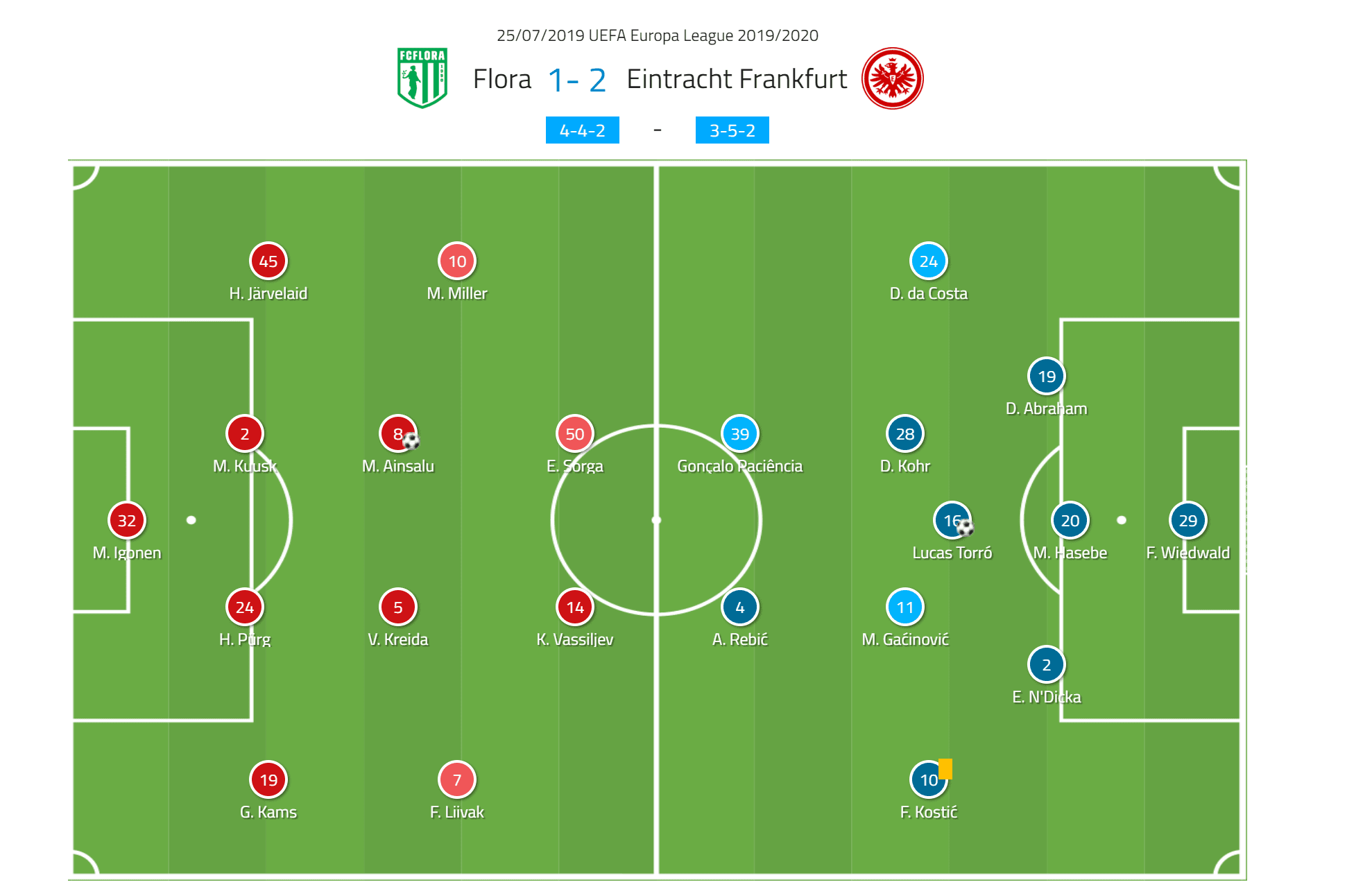
Rúnar Páll Sigmundsson’s side entered the match with a 5-4-1 formation, in contrast to what being shown above as Daniel Laxdal played as one of the centre-backs. In goal was Haraldur Björnsson, while Brynjar Gudjónsson and Martin Rauschenberg were the remaining two that played in the central of their defence. Central midfielders Alex Hauksson and Eyjólfur Hédinsson provided a shield in front of the defence. Meanwhile, Gudmundur Hafsteinsson played as the lone striker upfront.
A conservative first-half from both sides
During the first few minutes, it’s clear to see that Stjarnan’s intention was to defend their own box. By using a 5-4-1 formation with two defensive lines, they created a low-block right in front of the 16-yard box. With numerical superiority, they could dominate the half-spaces and central spaces. Alongside that, Espanyol players would find it hard to make a pass or send a through ball between channels.
The disciplined structure required players to stick to their position and focused on only the ball carrier and his possible passing options. It seems like a disadvantage to them as this limited their press and hindered them from creating goalscoring chances. But due to the fact that Espanyol circulated the ball a lot, they managed to keep the home side from approaching Björnsson’s goal in the first half.
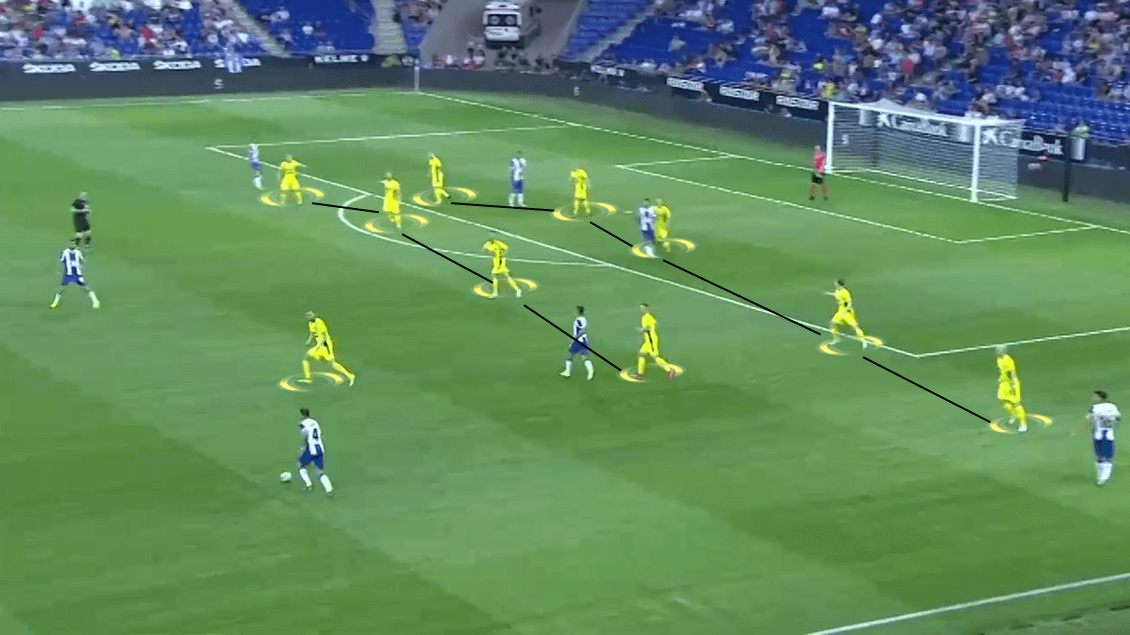
On a few rare occasions, Stjarnan players changed their defensive formation into a 4-5-1. Laxdal would move into the central of the midfield while the other two central midfielders stretched wide. Although the principles remained unchanged, the five-man midfield line gave them the flexibility when pressing Espanyol.
They forced the Spanish side to move the ball quicker by overloading the spaces surround the ball carrier. Eventually, they would take advantage of hard touches or wrong passes to create a counter-attack. But Gallejo’s side did not fall into the plan using players’ positioning and short passes to limit the risk.
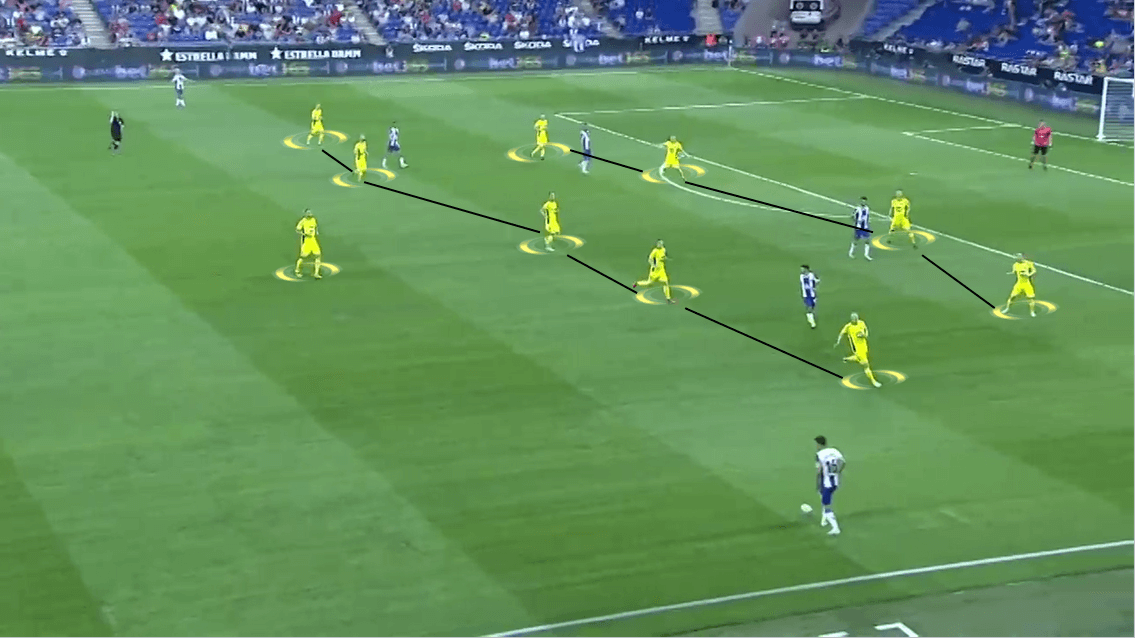
So, how did Gallejo and his players counter the opposition’s style of play? As mentioned, they preferred to circulate the ball between the players in front of Stjarnan’s defensive structure. Throughout the majority of the time, Naldo and Lluis López located themselves near the halfway line while Darder and Víctor Sánchez came short to create a passing block. Meanwhile, Granero and Melendo’ positions were usually flexible, as they could move in between the channels and shifted wide to support Pedrosa and Javi López.
When the wing-backs overlapped, the attacking midfielders would tuck inside. They turned themselves into available passing options and allowed the strikers to roam from their positions. Their average position map clearly showed Gallejo’s intention as most of his players were located on the edge of the final third.
Also, it doesn’t come as a surprise when two centre-backs created most of Espanyol’s links. Naldo and Lluis López usually circulated the ball among them while Lluis made a few passes towards Pedrosa. Sánchez and Darder act as the connections between the defenders and the attackers.
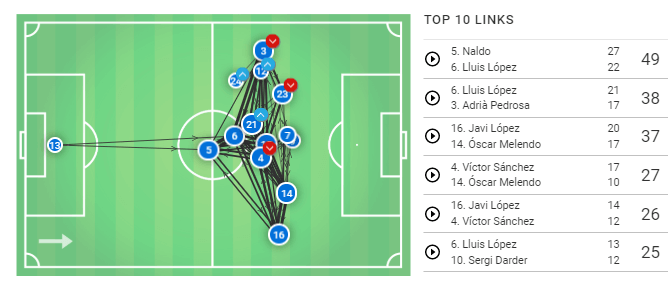
But holding much of the ball without transforming them into chances means nothing in football. In total, Espanyol created eight chances in the first half but they only came close through two of Ferreyra’s chances. One of them came from a quick combination that occurred on the right-hand side.
After receiving the ball from Víctor Sánchez, Melendo immediately laid it off for Javi López. At the same time, Espanyol’s number four noticed the space behind Stjarnan’s defence and ran into it. The right wing-back picked him out with a pass and Sánchez made a cross in for Ferreyra. But the Argentinian striker was denied a goal by a well-timed sliding tackle from the opposition’s defender.
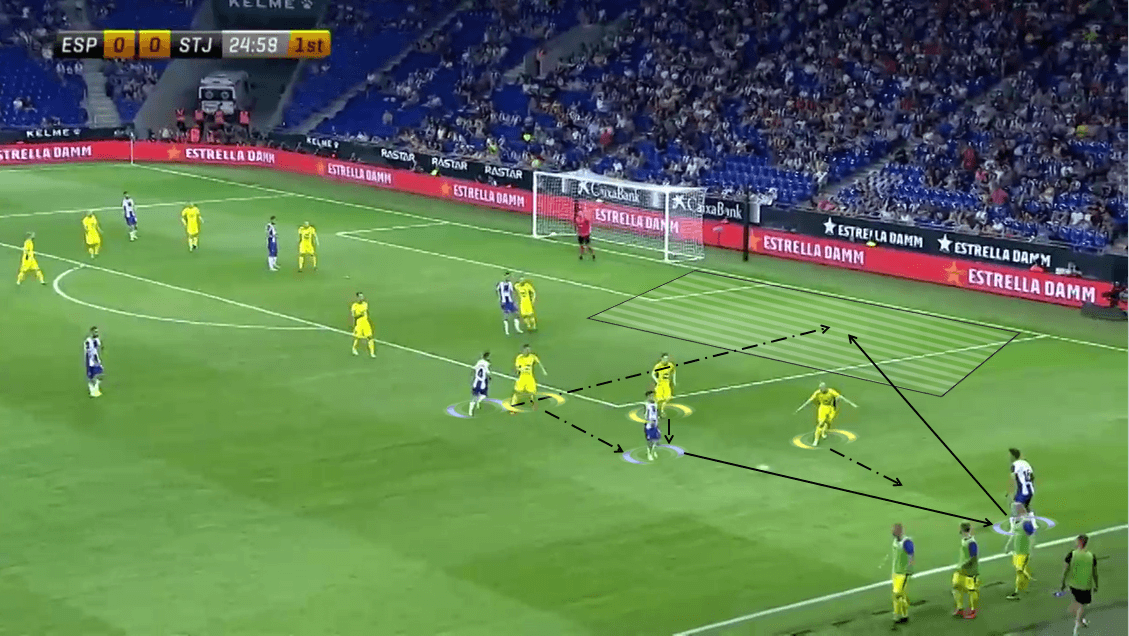
Espanyol also attempted to use lofted through balls and players’ movements to beat the stubborn defensive structure. A midfielder, usually Granero or Darder, would move centrally and near the edge of the final third to find potential receivers. In the meantime, a striker or Melendo made a late run behind the defensive line. Ferreyra’s first chance also came from a similar situation, but Stjarnan’s defender was able to stop it.
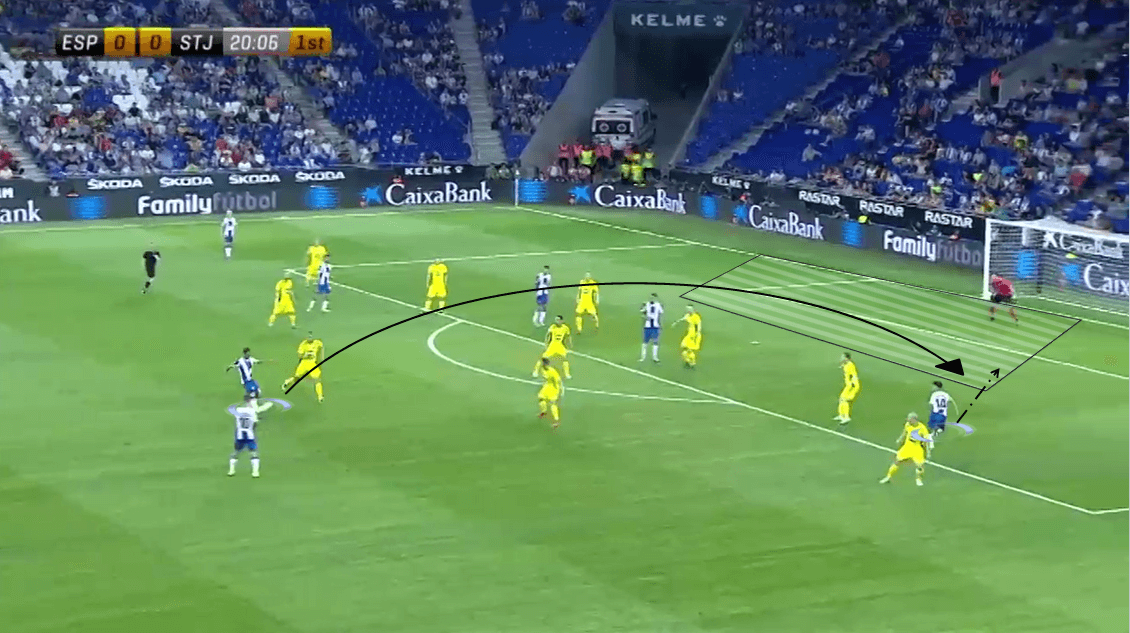
Defensively, they pressed high up the pitch with the aim of winning the ball high up the pitch. Gallejo used a high line of engagement in which both strikers were responsible to press the centre-backs. The midfielders formed the second line and located inside the opposition’s half to provide supports and prevent through balls.
Their aggressive, man-oriented press caused troubles for Stjarnan and they couldn’t build up from the back. This forced them to make back passes to the goalkeeper and used long balls to clear it out of the overloaded area.
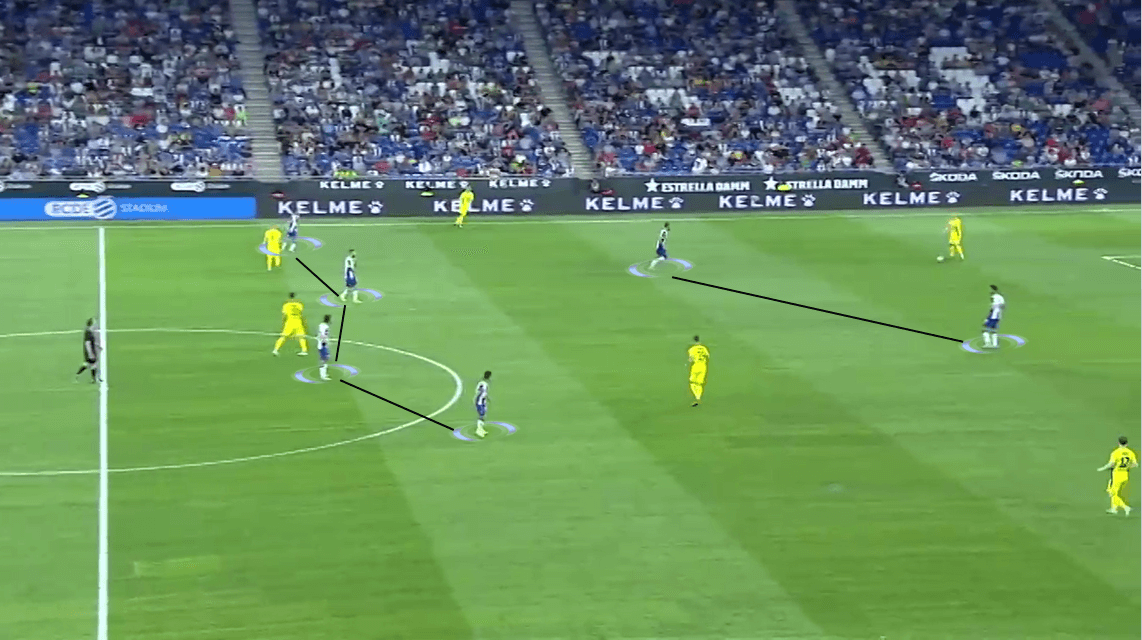
Espanyol’s second-half turnaround
The second half witnessed Pedrosa have more of the ball and involved in two of the remaining goals. Usually, Granero’s movement attracted the defenders and the former Real Madrid midfielder dragged them inside. It opened spaces for Pedrosa to assess his options and pick out a cross. He also reached a higher rate of success when making crosses into the box, which stood at 50% (completed four of his eight crosses). Ferreyra’s first goal was the perfect example of this type of situation.
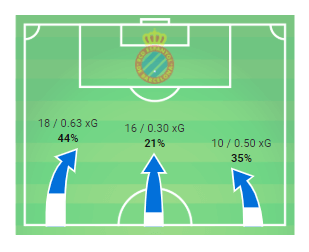
Just three minutes after the whistle, Pedrosa made an outstanding cross to set up Ferreyra’s opening goal. Notice Granero’s position where he was surrounded by three Stjarnan’s players and only one moved out wide to close Pedrosa down. The left-back had both spaces and time to send a cross into the box. Meanwhile, although Ferreyra made a late start compared to the opposition’s defender, he outjumped him and sent Espanyol fans into rapture.
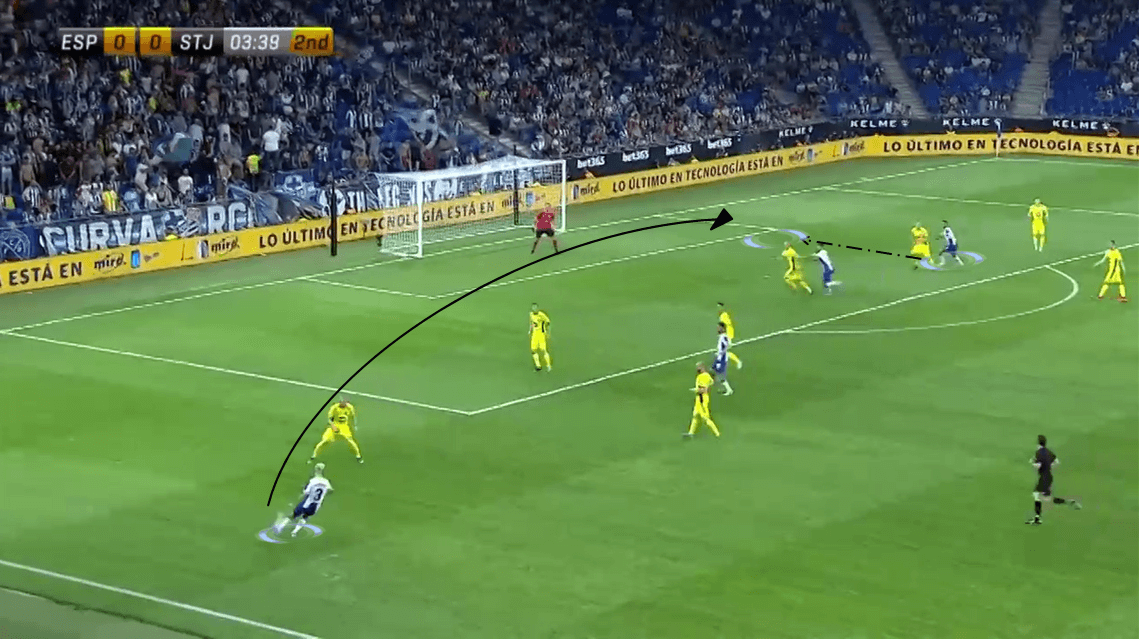
After that goal, Espanyol continued to rely on crosses and the strikers’ movements inside the box. As shown in the graph, the number of crosses was divided equally on both flanks. But in the first half, the Spanish side focused the ball down the right-hand side for Javi López and Melendo. So it’s not surprising to see the club’s captain made most crosses compared to other team’s players, which stood at twelve. It was from that right-hand side where Ferreyra and Iglesias had their second and first goal respectively inside the second half.
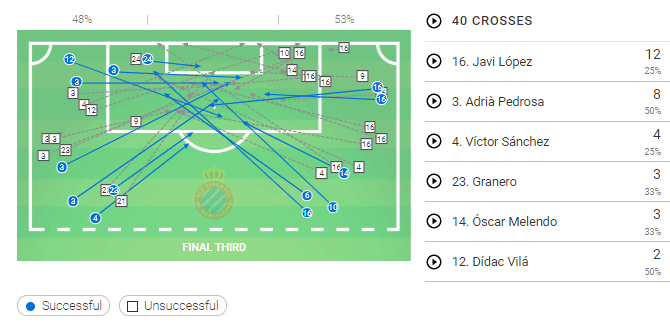
Gallejo didn’t want to throw the four-goal advantage away and he instructed the players to lower their tempo down during the remaining minutes. This allowed Stjarnan to push forward and increase the pressure on the home side. They used a man-oriented press when out of possession and aimed to win the ball high up the pitch. But Espanyol remained the superior team and saw out the game without conceding.
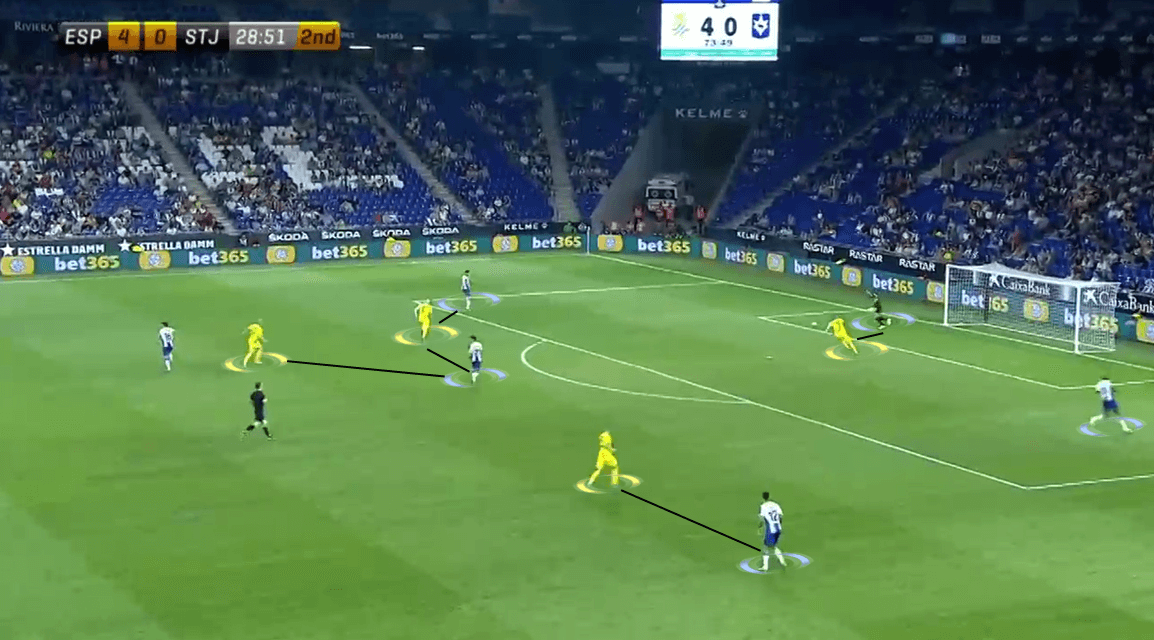
Conclusion
It was a dream start for Espanyol to their Europa League campaign with a comfortable 4-0 win. Two goals from Ferreyra and Iglesias and a possession-dominated performance gained Gallejo and his side a big advantage before their journey to Iceland.
Indeed, Stjarnan was expected to struggle in this match and the performance on the field clearly backed up that statement. Sigmundsson has to think big and come up with something that could surprise the Spanish side in order to complete the U-turn at home.
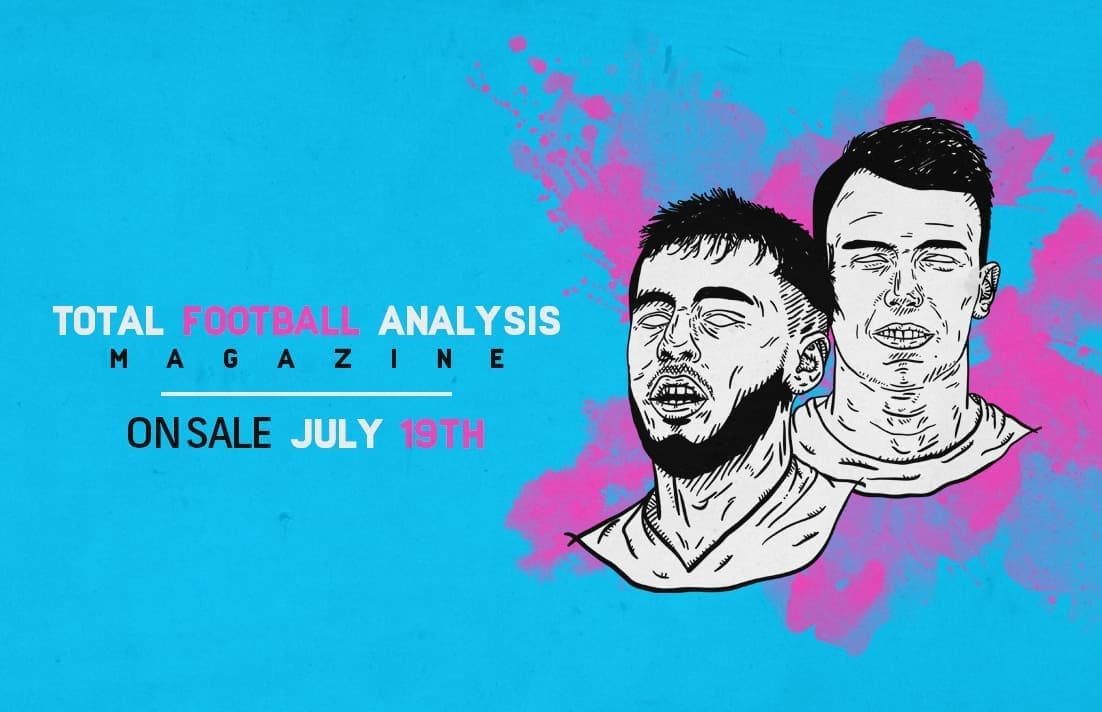
If you love tactical analysis, then you’ll love the digital magazines from totalfootballanalysis.com – a guaranteed 100+ pages of pure tactical analysis covering topics from the Premier League, Serie A, La Liga, Bundesliga and many, many more. Buy your copy of the July issue for just ₤4.99 here, or even better sign up for a ₤50 annual membership (12 monthly issues plus the annual review) right here.

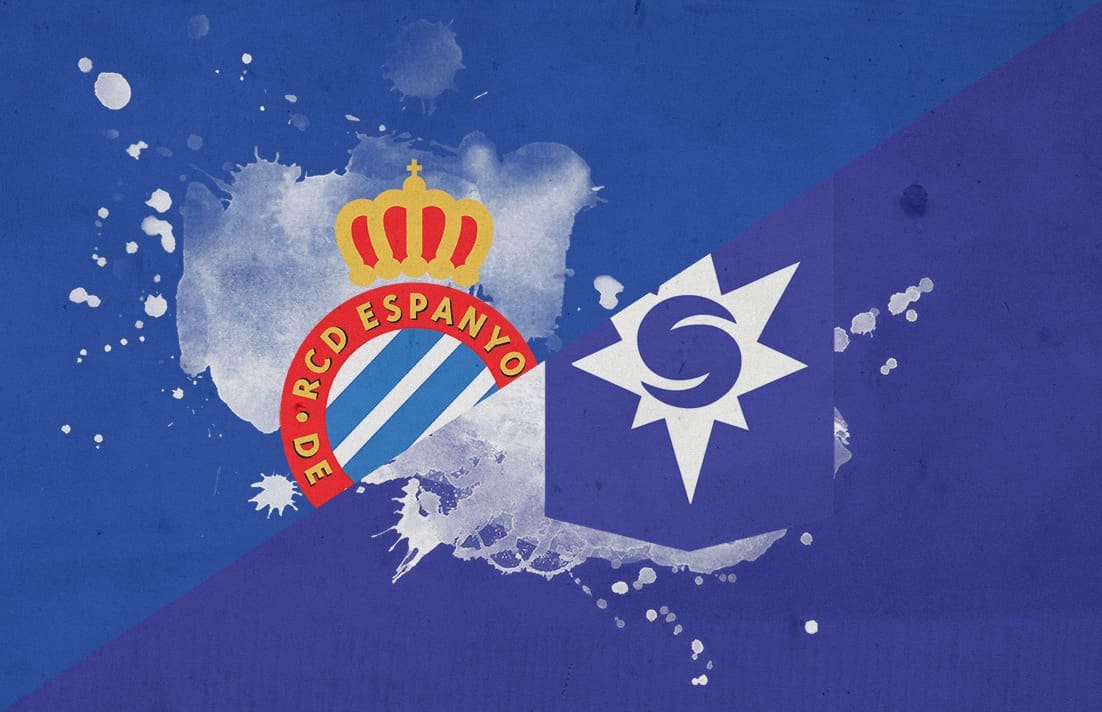



Comments